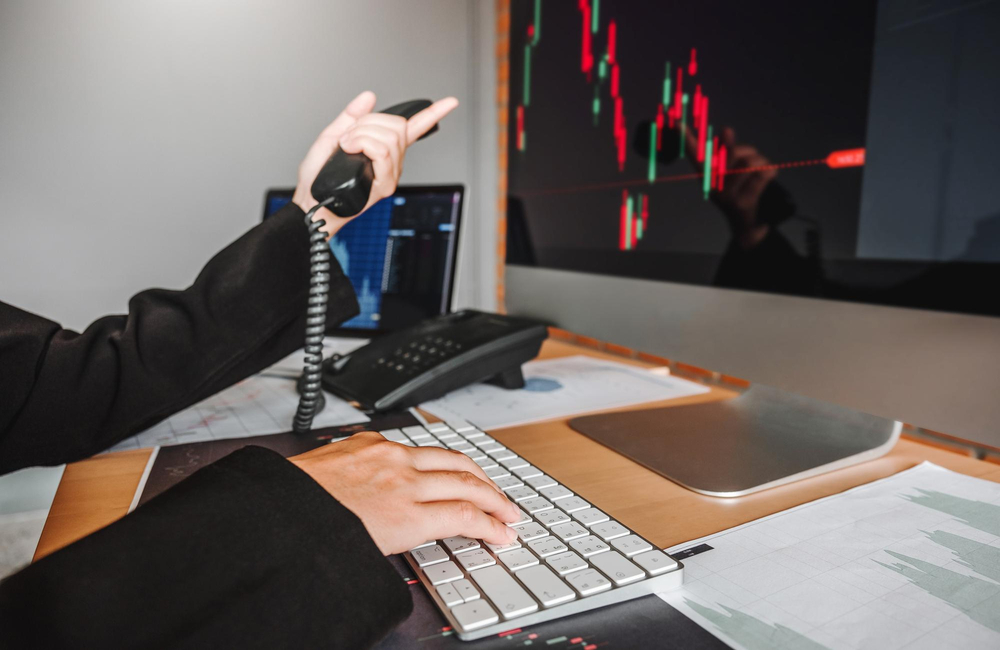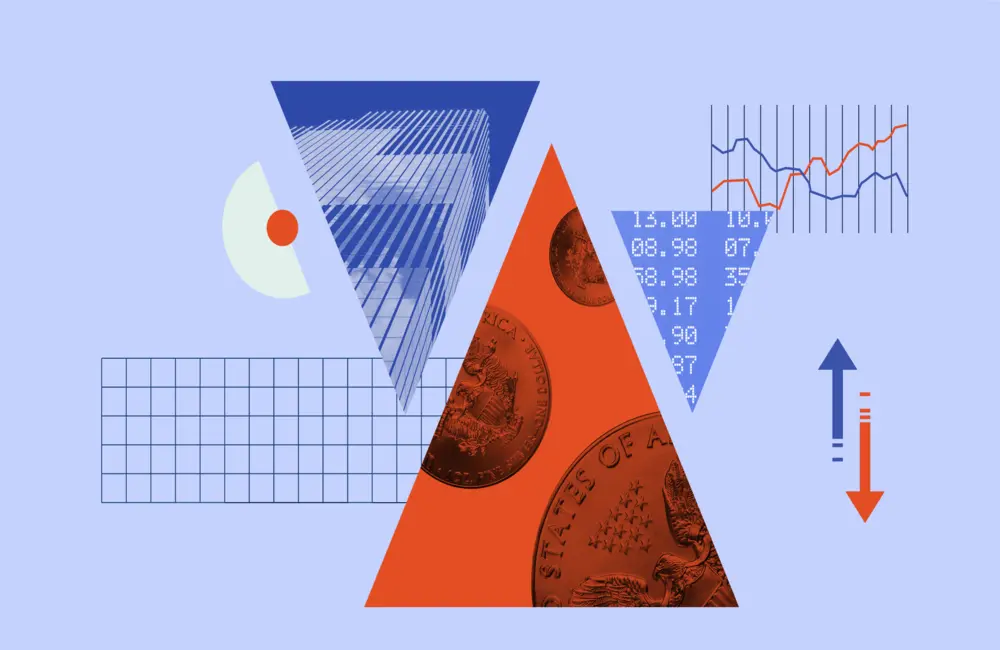ASX futures were 19 points or 0.3% lower at 6345 at 8.00am Monday as indicated by muted selling at the open.
Abroad, the S&P 500 climbed 0.2 percent and the Nasdaq Composite notched a 1.4 percent advance. The Dow fell 0.1%. Each finished the week with sharp losses. The S&P 500 dropped 5.8 for the week, its biggest decline since the Covid pandemic upended markets in March of 2020. The Dow dropped 4.8 percent on the week, its steepest decline since October 2020.
Markets of all kinds are facing a reckoning. Inflation, at decades-high levels, is roiling consumers, and investors are asking themselves whether central banks perhaps might act too aggressively to combat it and inadvertently push the economy into recession. The US Federal Reserve indicated this week that it would further lift rates at the fastest pace in decades, which could add pressure on stocks.
“The big question is, will the Fed raise so much that they end up with a recession? That’s what the stock market is attempting to price in,” said Jay Willoughby, chief investment officer at TIFF Investment Management.
The selling was felt locally, where the S&P/ASX 200 sank 1.8% to 6474.8, marking the worst week for Australian stocks since the early days of the Covid-19 pandemic.
The ASX 200 dipped 6.6% for the four-session week. It hadn’t dropped so much in a week since March 2020. The sixth straight daily loss for the benchmark was its longest losing streak since February 2020.
Ten of 11 sectors fell on Friday, with materials, tech and the financials leading the losses. The heavyweight financial sector, including more than 25% of the ASX 200 by market capitalization, shed 2.2%.
Banks Westpac, ANZ, NAB and Commonwealth tumbled 0.7% to 3.6% on fears of a recession in Australia and around the world.
In commodity markets, Brent crude oil was down 5.6% at US$113.12 a barrel. Iron ore fell 5.7% to US$122.15. Gold lost 0.5% to US$1840.60.
Long bond markets dropped Friday and the Australian 2 Year government bonds yields peaked at 3.27% and 10 Year re-exceeded 4%, sitting at 4.13%. In the US the yield on 2 year Treasury notes rose to 3.18% while the yield on the 10 year US Treasury notes inched down to 3.23% as economic slowdown fears pushed investors into long-dated bonds.
Asia
Chinese equities advanced, with renewables, nonferrous metals and liquor makers leading gains. A share and yuan assets became a relative haven with rising volatility elsewhere, Central China Securities says in a note. The new Covid-19 cases in Shanghai and across the nation have been effectively controlled, which means a brisker pace of work and production resumption throughout the country, it said. Kweichow Moutai jumped 3.9%, battery maker CATL increased 5.6% and Ganfeng Lithium rose 6.2%. The Shanghai Composite Index rose 1.0% to 3316.79, for a weekly gain of 1.0%. The Shenzhen Composite index added 1.2% and the ChiNext Price index rose 2.8%.
Hong Kong shares finished the session in the black, with the market recovering from a sell-off on Thursday. The Hang Seng Index added 1.1% to close at 21075.00. Chinese tech firms bounced back to top the index’s gainers. JD.com jumped 6.1% on a positive outlook for its speedy 618 sales. Citi analysts raised its forecast for the expected gross merchandise value of the Chinese e-commerce company during the annual shopping festival this week, citing probable strong demand for home appliances and smartphones, product categories that JD specializes in. Meituan gained 5.2% and Alibaba Health was up 5.1%.
Japan’s Nikkei Stock Average declined 1.8%, settling at 25963.00. The Nikkei’s losses eased a little after the BOJ’s ultra-accommodative policy was reinforced by its decision to hold firmly to it, confirming that it will not follow the Fed and other big central banks in tightening policy. Nikkei worst performers included Lasertec down 8.2%, Hoya losing 6.2% and Recruit Holdings off 5.8%. Meanwhile, Pan Pacific International climbed 3.3%, and Osaka Gas advanced 2.8%.
Europe
European markets were mixed as investors remained cautious in light of the uncertain economic backdrop. The pan-European Stoxx Europe 600 added 0.1%, the French CAC 40 dipped 0.1% and the German DAX rose 0.7%.
“New tightening from central banks, the painful unwinding of stimulus and general caution over the outlook continues to drive investors from stocks, with no sign yet of a summer bottom,” IG analyst Chris Beauchamp writes.
London’s FTSE 100 ended down 0.4% Friday as a drop in commodities dragged on the index. The price of copper in London was heading for its “lowest levels this year” and oil was on track for its first losing week since early May, Michael Hewson, the chief market analyst at CMC Markets UK, said in a note.
Earlier in the session, mining company Glencore buoyed the index by predicting its trading division would meet the top end of its interim profits outlook range. The day’s biggest mover was Sage Group, up 5.6%, followed by Ocado Group, up 5.5%, and Intermediate Capital Group, up 4%. BP, Rio Tinto and Shell were the biggest fallers of the day, falling 6.2%, 4.9% and 4.7%, respectively.
North America
The S&P 500 and Dow Jones Industrial Average on Friday finished their worst weeks since 2020, as the major indexes continued a series of whipsaw moves that have brought new swings and fresh volatility to markets.
The S&P 500 was up 0.2 percent, while the Nasdaq Composite gained 1.4 percent. The Dow fell 0.1%. All three ended the week with sharp losses. The S&P 500 dropped 5.8 percent for the week, its steepest bill since the Covid pandemic upended markets in March 2020. The Dow lost 4.8 percent for the week, its largest decline since October 2020.
The once-booming crypto market also had a wild week, adding to investors' fears that there's no escaping the current market chaos. Celsius Network LLC, one of the biggest crypto lending platforms, told customers on Sunday it was freezing all withdrawals. That anxiety rippled through the industry all week. Companies including Coinbase announced large rounds of job cuts, and prices for bitcoin and other cryptocurrencies fell.
All sorts of markets are confronting a reckoning. Inflation, the highest in decades, is roiling consumers, and investors are debating whether central banks, including the Federal Reserve, may go too far to combat it and accidentally tip the economy into recession. The Fed this week signalled that it would keep raising rates at the fastest pace in decades, a move that could also put a further damper on stocks.
The S&P 500 fell into a bear market Monday and kept tumbling Tuesday. Stocks surged Wednesday after the Fed raised rates by its largest amount since 1994, then reversed that course Thursday as investors grappled with the reality of persistent inflation.
“The principal question mark is, ‘Will the Fed tighten enough to tip us into recession? That’s what the stock market is trying to discount,” said Jay Willoughby, chief investment officer at TIFF Investment Management.
The S&P 500 sectors have fallen at least 15% from their recent highs with seven in bear market territory. Winners on Friday included communication services and consumer discretionary, while energy and utilities were among the laggards.
The recent rate hikes upend a longer cycle of loose monetary policy that let both stock and bond prices run up the past few years. Expectations for multiple further rate hikes over the course of the year have added to fears that quick tightening could temper growth. US mortgage rates just hit their highest point in more than 13 years. Recent economic figures have suggested steep drops in important sectors.
Hani Redha, a portfolio manager at PineBridge Investments, said inflation may yet rise even more in the months ahead as energy prices remain high.
“The central banks, who have been friends of ours for a very long time, are telling us we should expect pain,” Mr. Redha said. “That inflation number is all that matters right now. Even if we see growth slowing a hell of a lot, that won’t be enough to make the Fed change direction.”
Tech stocks rose. Twitter rose 42 cents, or 1.1 percent, to $37.78; Meta Platforms added $2.87, or 1.8 percent, to $163.74; and Microsoft climbed $2.68, or 1.1 percent, to $247.65.
“Is this a profit recession or are we going into an economic recession? And that’s up in the air,” said Michelle Cluver, associate portfolio strategist at Global X.
Brent, the international standard for oil prices, dropped $6.69, or 5.6 percent, to $113.12 a barrel. European natural-gas prices climbed 5.4% Friday, bringing their weekly increase to 51%. Moscow’s decision to sharply cut natural-gas exports to Europe this week has thrown the continent’s energy crisis into a perilous new phase that threatens to sap vital energy supplies and bring the continent’s economy to its knees. In American markets, Diamondback Energy, Devon Energy and ConocoPhillips all fell more than 8 percent.
There were still signs that investors were seeking assets considered safe, including the US dollar and US government bonds. The WSJ Dollar Index, which measures the greenback against a basket of 16 currencies, climbed 0.9%. In bond markets, the yield on the benchmark 10-year Treasury edged down to 3.238%. Yields fall as prices rise.
“We are closer to the bottom,” said Josh Emanuel, chief investment officer of Wilshire Funds Management. Equity and bonds markets have already priced in most of the economic and earnings risk, he added. Mr. Emanuel’s firm has cut exposure to long-duration bonds and favored value equities in recent weeks.
The dollar value of bitcoin was showing signs of stabilization on Friday but plunged sharply over the weekend, dropping below US$20,000 for the first time since the end of 2020.






















